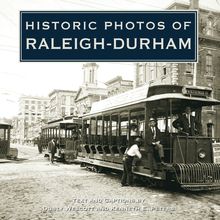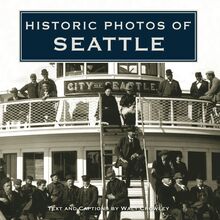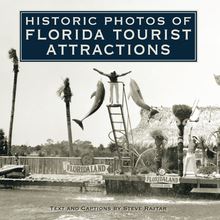Historic Photos of Atlanta , livre ebook
144
pages
English
Ebooks
2007
Vous pourrez modifier la taille du texte de cet ouvrage
Obtenez un accès à la bibliothèque pour le consulter en ligne En savoir plus
Découvre YouScribe en t'inscrivant gratuitement
Découvre YouScribe en t'inscrivant gratuitement
144
pages
English
Ebooks
2007
Vous pourrez modifier la taille du texte de cet ouvrage
Obtenez un accès à la bibliothèque pour le consulter en ligne En savoir plus
Publié par
Date de parution
14 décembre 2007
Nombre de lectures
3
EAN13
9781618586001
Langue
English
Poids de l'ouvrage
11 Mo
Publié par
Date de parution
14 décembre 2007
Nombre de lectures
3
EAN13
9781618586001
Langue
English
Poids de l'ouvrage
11 Mo
HISTORIC PHOTOS OF
ATLANTA
M ICHAEL R OSE
A TLANTA H ISTORY C ENTER
Crowds line Peachtree Street during the Heroes Day parade to celebrate the end of World War II. The city was an important military center during the war, with establishments at Fort McPherson, Camp Gordon, Lawson General Hospital, and the present Fort Gillem. Together with the local military industries and the city s traditional role as a transportation center, World War II transformed Atlanta into the South s unrivaled leading metropolitan area.
HISTORIC PHOTOS OF
ATLANTA
Turner Publishing Company
www.turnerpublishing.com
Historic Photos of Atlanta
Copyright 2007 Turner Publishing Company
All rights reserved.
This book or any part thereof may not be reproduced or transmitted in any form or by any means, electronic or mechanical, including photocopying, recording, or by any information storage and retrieval system, without permission in writing from the publisher.
Library of Congress Control Number: 2007929605
ISBN: 978-1-59652-404-0
ISBN 978-1-68336-985-1 (hc)
C ONTENTS
A CKNOWLEDGMENTS
P REFACE
A S TAKE IN THE W ILDERNESS : F ROM B IRTH TO D ESTRUCTION (1837-1864)
T HE P HOENIX R ISES : F ROM A SHES TO N EW S OUTH C APITAL (1865-1899)
F ORWARD A TLANTA : F ROM B OOMTOWN TO S OUTHERN S YMBOL (1900-1939)
C ENTENNIAL C ITY : F ROM S OUTHERN M ETROPOLIS TO O LYMPIC V ILLAGE (1940-1996)
N OTES ON THE P HOTOGRAPHS
Dr. and Mrs. Martin Luther King, Jr., and the Reverend and Mrs. Ralph David Abernathy tour Markham Street in one of the city s most impoverished areas in January 1966. Residents in the Vine City neighborhood were protesting poor housing conditions, which Dr. King deemed a shame on the community. After Dr. King was awarded the Nobel Peace Prize in 1964, the city honored him with the first officially integrated dinner in the city s history.
A CKNOWLEDGMENTS
All of the photographs included in Historic Photos of Atlanta are from the collection of the Kenan Research Center at the
Atlanta History Center.
I would like to acknowledge the individuals and institutions who have generously donated photographs and acquisition funds to the Kenan Research Center and who have made possible the quality and quantity of visual collections that made this book possible.
Thanks, as always, to the staff of the Kenan Research Center for their advice, patience, and understanding. And thanks to Franklin M. Garrett, who led the way.
Above all, thanks go to Betsy Rix, for her understanding of graphic excellence, magic with digital imaging, unlimited patience and perseverance, and unfailing good humor.
- Michael Rose
P REFACE
A picture is worth a thousand words, as the saying goes. The idea being that a photograph in itself can express what may require many paragraphs of a book s text to explain. The images collected here offer a glimpse of time through Atlanta s history. Though not a history of the city, they are arranged chronologically from the earliest-known existing photograph taken in the city to those from the later twentieth century. Some images may be familiar, but the collection presented here provides many scenes of Atlanta never seen or never published before.
These photographs are both representational and symbolic. Some present street scenes or views of the city throughout time, others may provide a sense of time and place, evoking a feeling or sentiment from the viewer. Some images are iconic-many photographs of Dr. Martin Luther King, Jr., convey the concepts of justice and equality for which he stood, of the civil rights movement and the struggle for racial equality.
Photographers for many of the photographs are known, ranging from George N. Barnard, who traveled with General William T. Sherman s army, to modern photojournalists such as Kenneth G. Rogers, Bill Wilson, and Floyd Jillson of the city s large newspapers, or Boyd Lewis, who worked in Atlanta s counterculture alternative press. The earliest image is a daguerreotype of an Atlanta home in 1850. For the next number of years, the images in the book are the work of professional studio photographers and most of the building views and street scenes are commercial work executed by them. It is not until the early twentieth century that amateur photography appears, presenting Atlantans in informal poses, riding in cars, and smiling. As the twentieth century progresses, the photojournalism of professional news photographers appears as newspapers document a changing city.
Although the image presents the visual record, some words contain a visual legend that in them brings photographs and images to mind. Peachtree, Scarlett, and Sherman are three words that in many ways defined the public s perception of Atlanta for decades-a timeless reflection of Civil War Atlanta reinforced by the novel Gone With the Wind . Add to them Coca-Cola, CNN, Delta, and the Olympic Games, and the impression that comes to mind is the emerging Atlanta of the twentieth century-the home of the Atlanta Spirit, in which business and promotion characterize the city.
Atlanta is a city of words and images, presented here to give the viewer a sketch of time, both distant and close. The city has lost much of its physical past-it is missing the first City Hall and all of the antebellum town, each of its four historic passenger train depots (all of them razed), as well as many of the homes and businesses that once lined the streets throughout the city. Historic Photos of Atlanta remembers many of these places as well as the people who have lived, worked, and played in a city born in a southern forest, founded by a train engineer who one day drove a stake in the ground where he thought it should be.
In 1847, Richard Peters purchased this house and its two-acre lot at the corner of Mitchell and Forsyth streets from Samuel G. Jones for $1,400. This half-plate daguerreotype of the house, made around 1850, is the earliest-known existing photograph of Atlanta. Peters served as principal assistant to Joseph E. Thomson, chief engineer of the Georgia Railroad. Thomson is credited with coining the term Atlanta to replace the town s older name, Marthasville.
A S TAKE IN THE W ILDERNESS : F ROM B IRTH TO D ESTRUCTION
(1837-1864)
Atlanta was founded as a frontier railroad town and for many years was as rough and tumble as the words bring to mind. The State of Georgia sought a railroad running north and south through the Piedmont and by driving a stake in the backwoods, Stephen H. Long selected the southern end of that rail line. When he did, he picked the spot around which Atlanta would emerge.
Major Long, a civil engineer for the Western Atlantic Railroad, and the area s few white pioneers were not the first inhabitants. The Creeks hunted here, settling nearby at Sandtown and Buzzard s Roost along the Chattahoochee River. They also had a village, where Long chose to cross the river with a railroad bridge. The village was called Standing Peachtree.
The town that sprang from Long s stake was variously called Terminus, Thrasherville-for general-store owner John Thrasher-and White Hall, for a local tavern. It wasn t until 1843 that the town was officially named Marthasville, and then very quickly changed to Atlanta. Parts of town had evocative names, such as the notorious Murrell s Row, poverty-stricken Slabtown, and the degraded Snake Nation. And not until 1851 did the Moral Party defeat the Rowdy Party in an election.
By that time, the first train had run from Atlanta to Chattanooga along the Western Atlantic line for which the town had been sited. Atlanta also became home to other rail lines-the Georgia Railroad from Augusta, the Macon Western connecting south, and the Atlanta West Point linking the city to the west. By 1857, Atlanta claimed the title Gate City of the South for strategic railroad connections north, south, east, and west.
With the advent of the Civil War, those connections created the Confederacy s central rail depot downtown. Troops, munitions, food, and supplies moving from the western theater of war to the eastern in Virginia passed through the city s station. With it, Atlanta became an arsenal and factory, producing war materiel such as rails, munitions, clothing, cannon, and coffins.
The Atlanta war machine would become Sherman s target. In five months he moved from Chattanooga-ironically, the Western Atlantic Railroad was his supply lifeline-into Atlanta. After bombarding the city, he entered in September 1864, evicted its residents, and destroyed much of the city before leaving in mid November. In less than three decades, a rough and tumble spot in the woods had become a primary target in America s battle for national unity.
Passengers wait on a flatboat on the Chattahoochee River at the Mayson-Turner Ferry, which crossed the river at the site of the present Bankhead Highway. Atlanta was situated for its rail lines and not for convenience to a main waterway. Nevertheless, ferry crossings along the Chattahoochee River supplied the city with historic street names, including Paces Ferry, Montgomery Ferry, Powers Ferry, and Johnson Ferry. Ironically, Atlanta s first ferry crossing was located at a site named Shallowford.
Like ferry crossings, the area s saw and grist mills provided place names throughout Atlanta, including Moores Mill, Howell Mill, Akers Mill, Terrell Mill, and Tilly Mill. In late August 1864, following a month-long siege of Atlanta, Union general William T. Sherman attempted to cut the city s railroad supply lines south of town. His victory on September 1 in the Battle of Jonesboro near Jester s Old Mill forced Confederate troops to finally evacuate Atlanta.
Unlike the plantation South where cotton was king, Atlanta s early economy was based on commerce and the railroads. Though the site of this house is unknown, photographer George N. Barnard noted its location as Atlanta. One of the area s largest antebellum plantations belonged to James H. Kirkpatrick














